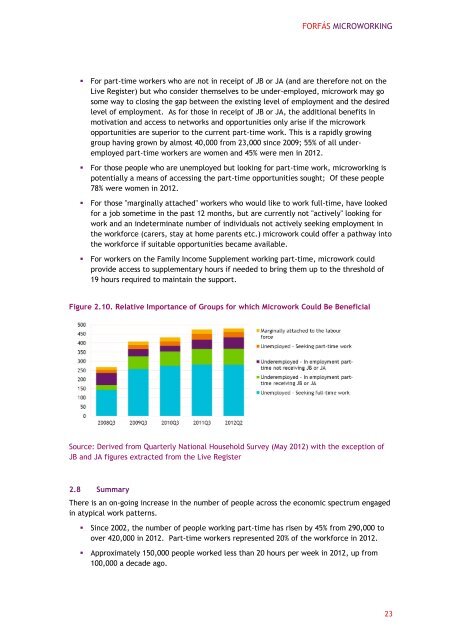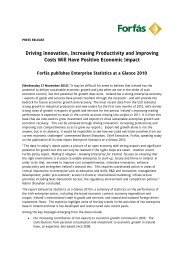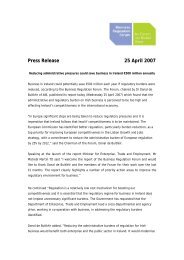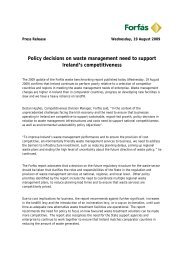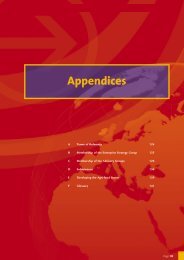Microworking (PDF, 59 pages, 1106KB) - Forfás
Microworking (PDF, 59 pages, 1106KB) - Forfás
Microworking (PDF, 59 pages, 1106KB) - Forfás
You also want an ePaper? Increase the reach of your titles
YUMPU automatically turns print PDFs into web optimized ePapers that Google loves.
FORFÁS MICROWORKING<br />
• For part-time workers who are not in receipt of JB or JA (and are therefore not on the<br />
Live Register) but who consider themselves to be under-employed, microwork may go<br />
some way to closing the gap between the existing level of employment and the desired<br />
level of employment. As for those in receipt of JB or JA, the additional benefits in<br />
motivation and access to networks and opportunities only arise if the microwork<br />
opportunities are superior to the current part-time work. This is a rapidly growing<br />
group having grown by almost 40,000 from 23,000 since 2009; 55% of all underemployed<br />
part-time workers are women and 45% were men in 2012.<br />
• For those people who are unemployed but looking for part-time work, microworking is<br />
potentially a means of accessing the part-time opportunities sought; Of these people<br />
78% were women in 2012.<br />
• For those "marginally attached" workers who would like to work full-time, have looked<br />
for a job sometime in the past 12 months, but are currently not "actively" looking for<br />
work and an indeterminate number of individuals not actively seeking employment in<br />
the workforce (carers, stay at home parents etc.) microwork could offer a pathway into<br />
the workforce if suitable opportunities became available.<br />
• For workers on the Family Income Supplement working part-time, microwork could<br />
provide access to supplementary hours if needed to bring them up to the threshold of<br />
19 hours required to maintain the support.<br />
Figure 2.10. Relative Importance of Groups for which Microwork Could Be Beneficial<br />
Source: Derived from Quarterly National Household Survey (May 2012) with the exception of<br />
JB and JA figures extracted from the Live Register<br />
2.8 Summary<br />
There is an on-going increase in the number of people across the economic spectrum engaged<br />
in atypical work patterns.<br />
• Since 2002, the number of people working part-time has risen by 45% from 290,000 to<br />
over 420,000 in 2012. Part-time workers represented 20% of the workforce in 2012.<br />
• Approximately 150,000 people worked less than 20 hours per week in 2012, up from<br />
100,000 a decade ago.<br />
23


